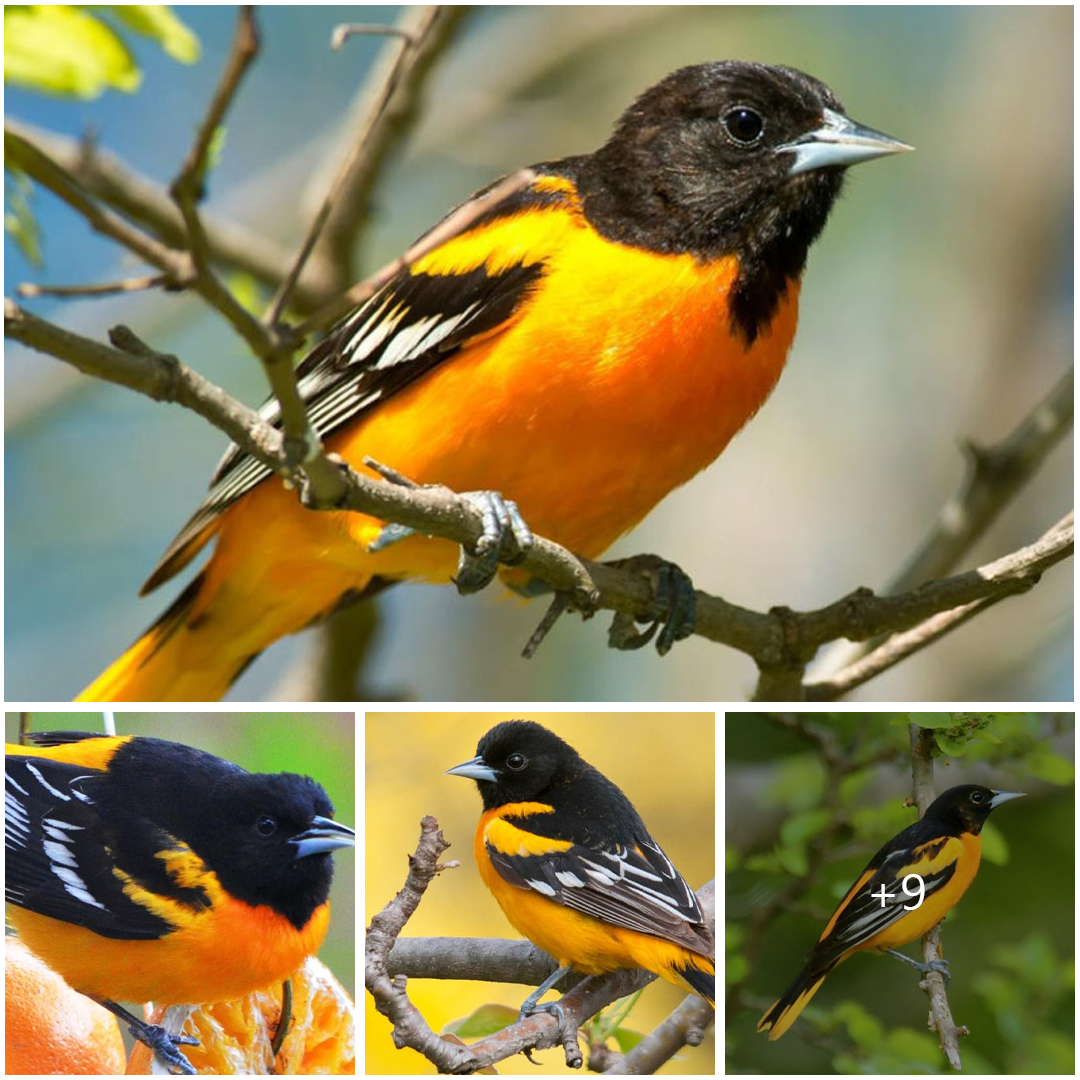
The Baltimore Oriole: A Vibrant Avian Jewel of North America
The Baltimore Oriole, scientifically classified as Icterus galbula, stands as a dazzling gem among North America’s avian treasures. With its vibrant plumage, enchanting song, and distinctive presence, this beloved species captivates birdwatchers and nature enthusiasts alike.
Endemic to eastern North America, the Baltimore Oriole graces a variety of habitats, including deciduous forests, orchards, and suburban gardens. Its striking appearance, characterized by bold orange plumage accented with contrasting black wings and tail, renders it a sight to behold amidst verdant foliage or against the backdrop of a clear blue sky.
Central to the allure of the Baltimore Oriole is its melodious song, a symphony of rich whistles and flute-like notes that echo through woodlands and urban parks alike. Their vocal performances, often heard during the breeding season, add a delightful soundtrack to the natural world and serve as a testament to the species’ vibrant presence.
Beyond its aesthetic and auditory charms, the Baltimore Oriole plays vital ecological roles as pollinators and insect controllers. Feeding on nectar, fruits, and insects, they contribute to the propagation of flowering plants while helping to regulate populations of pests. Their presence in ecosystems underscores the intricate web of life and highlights the importance of biodiversity conservation.
However, the Baltimore Oriole faces threats from habitat loss, pesticide use, and climate change, which impact both their breeding grounds and wintering habitats. Conservation efforts aimed at preserving and restoring habitats, promoting sustainable land management practices, and raising public awareness are crucial for ensuring the long-term survival of this iconic species.
In conclusion, the Baltimore Oriole shines brightly as a vibrant avian jewel of North America, captivating hearts with its beauty, song, and ecological significance. As stewards of the natural world, it is our collective responsibility to cherish and protect the habitats that sustain this beloved bird for generations to come.





